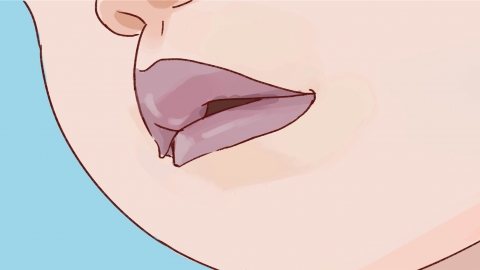What causes purple lips during high altitude sickness?
Generally, purple lips caused by altitude sickness can be due to factors such as hypoxic environmental stimulation, hemoconcentration, acute mountain sickness, high-altitude pulmonary edema, or chronic obstructive pulmonary disease. If discomfort occurs, timely medical attention is recommended. Detailed explanations are as follows:

1. Hypoxic Environmental Stimulation
In high-altitude areas, the atmospheric pressure decreases and the partial pressure of oxygen in the air drops, leading to reduced blood oxygen saturation and increased deoxyhemoglobin. Due to hypoxia, the lip mucosa may appear cyanotic or purplish. Vigorous physical activity should be avoided upon arrival at high altitude, and intermittent oxygen inhalation can help alleviate symptoms.
2. Hemoconcentration
The dry environment at high altitudes increases water evaporation from the body, raising blood viscosity and slowing blood flow. This reduces local oxygen delivery efficiency, potentially causing purple lips. It is recommended to drink ≥3000 ml of water daily and use oral rehydration salts to maintain electrolyte balance.
3. Acute Mountain Sickness
Acute mountain sickness occurs when ascending rapidly to elevations above 3000 meters, causing incomplete physiological adaptation to hypoxia. Hypoxia may lead to cerebral vasodilation, cerebral edema, and systemic tissue hypoxia, resulting in the aforementioned symptoms. Headache and nausea may also occur. Treatment may include medications such as ibuprofen sustained-release capsules, dexamethasone acetate tablets, and mannitol injection under a doctor's guidance.
4. High-Altitude Pulmonary Edema
High-altitude pulmonary edema is a specific high-altitude illness that occurs after entering high-altitude areas, where the atmospheric pressure and oxygen partial pressure drop sharply. This causes a sudden increase in pulmonary artery pressure, increased pulmonary blood volume, pulmonary circulation dysfunction, and fluid leakage from microcirculation into the lung interstitium and alveoli. This condition can impair gas exchange, worsen hypoxemia, and cause purple lips. Symptoms such as coughing and dyspnea may also occur. Patients can take medications such as furosemide tablets, nifedipine tablets, and aminophylline tablets as directed by a physician.
5. Chronic Obstructive Pulmonary Disease
Chronic obstructive pulmonary disease may result from long-term smoking or chronic bronchitis causing airway obstruction. The hypoxia at high altitudes may exacerbate ventilatory dysfunction, further lowering blood oxygen saturation and causing purple lips. Patients may also experience symptoms such as coughing and sputum production. Under a doctor's recommendation, patients can use medications such as salbutamol sulfate tablets, ipratropium bromide solution for inhalation, and budesonide suspension for inhalation.
When initially entering high-altitude areas, avoid rapid ascent. It is recommended to rest for 1–2 days for every 1000-meter increase in elevation to gradually adapt to the hypoxic environment. Regularly monitor blood oxygen saturation, and seek immediate medical attention if it drops below 90% or if there are changes in consciousness.







